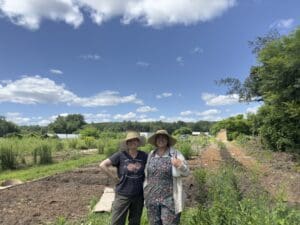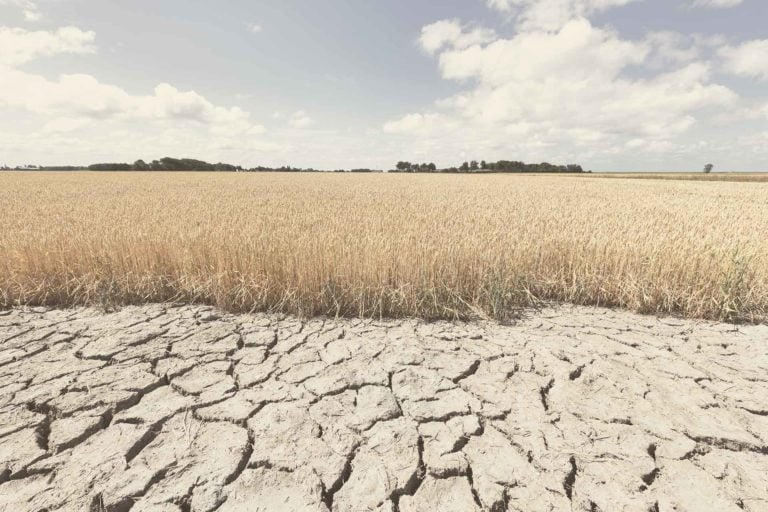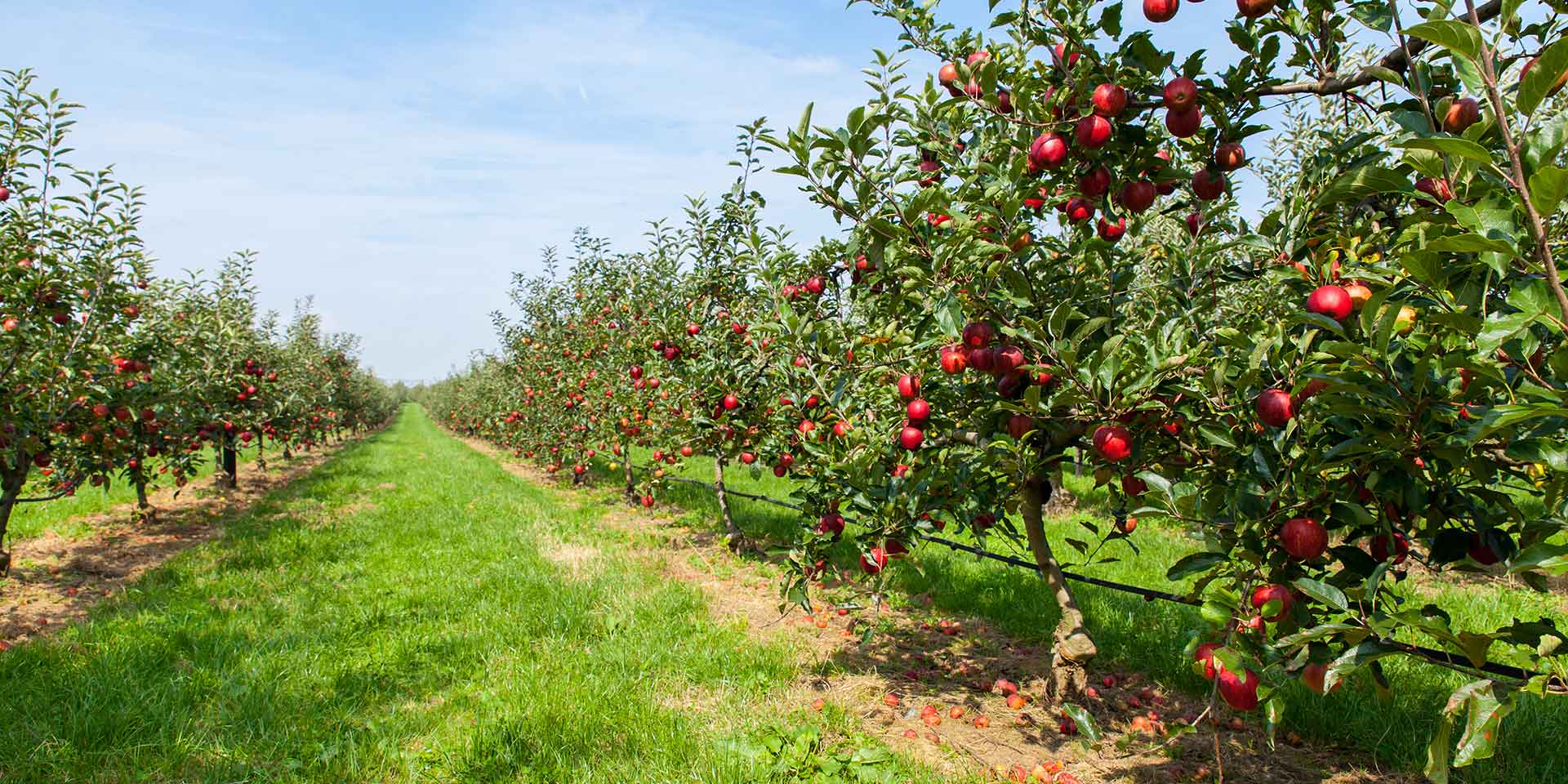Small Farmers in Post-Flood New England Are Starting to Rebuild, but Climate Extremes Are Here to Stay
In early July, Courtney Whitley saw his 12-year-old son, who sometimes helps out on the vegetable farm, admiring the eggplants. “I know it’s going to be a good harvest,” the boy told his dad.
Whitley agreed. First in Jamaica, then in the United States, he has farmed most of his life and is now the owner of Ras Farm in western Massachusetts. As he told me when I visited the area just a few weeks later, “The eggplants did look beautiful this year.”
But then, the rain started falling. First in neighboring Vermont, causing the Winooski River to rise and overflow. Rushing water, 4 to 8 inches deep, washed out roads and bridges in the state. The flood damage was so severe that it exceeded 2011’s Tropical Storm Irene in some areas. The president declared the flooding in Vermont a major disaster, ordering federal aid. The state, which has the largest proportion of organic farm acreage in the country, also had the largest damage of those affected by this summer’s heavy rains, with 7,000 acres of farmland under water.
The rain continued across New England, and other farms outside of Vermont were also submerged once the Connecticut River overflowed. The longest in the region, this river stretches over 400 miles from northern New Hampshire to the Long Island Sound. The flat areas of land that border it are called floodplains because the water channels meander over time, depositing fertile soil ideal for farming. Still, it’s a double-edged sword: As the river flows through New Hampshire, Vermont, Massachusetts and Connecticut, giving nutrients and water to the soil, it can also cause catastrophic damage when it floods.
Days after the rain began, Whitley woke up to a message that his plot of land, which he leases at GrowFood Northampton, one of many farms in western Massachusetts — and elsewhere in New England, including New Hampshire and Connecticut — that suffered losses, was underwater. The other plots and infrastructure were also submerged under at least 5 feet. “We worried with the farmers who lease farmland on our community farm, grieved with our community gardeners, and mourned for the land itself,” Pat James, GrowFood’s community garden manager, wrote for Northampton’s Daily Hampshire Gazette one week after the floods subsided.
The water itself wasn’t the only thing to worry about. Flood waters can disperse contaminants over long distances; even if farms are in rural areas, crops can still be damaged by contaminants and waste washed off from industrial or urban areas. “There is still a quantity of contamination left over once the water washes away,” explained Omanjana Goswami, an interdisciplinary scientist at the Union of Concerned Scientists (UCS). “After testing and a plan for treating the land, farmers may lose an entire season or more, based on what they found and state regulations.”

Whitley estimates he lost a total of “six thousand eggplants, four thousand bell peppers, one thousand habanero and five hundred tomatoes, all under water.” Even if anything could be rescued, under state and federal guidelines, crops touched by river floodwaters had to be destroyed. “There is nothing else to do but leave the field, plot it up, cover it and start all over next year,” Whitley told me, sounding defeated while sitting in the shade on his empty farm.
The Disproportionate Toll of a Changing Climate
As global temperatures rise, climate swings from one extreme to another are becoming more common, making it more challenging to predict the weather. Research from the American Farm Bureau Federation suggests that in 2021 alone, nationwide disasters caused $12.5 billion in crop losses associated with extreme drought, wildfires, hurricanes, freezes and flooding. Risk Management Agency programs (a federally subsidized form of crop insurance) covered only half of those losses, while the rest did not have a safety net. “This leaves farmers, who depend on some level of predictability, with very little room to adjust and adapt,” Goswami said.
“We think about this a lot,” Suna Turgay told me of adapting to this new “normal.” She is the co-owner of Flowerwork Farm and, along with Stacia Potter, also leases land at GrowFood Northampton. This was their second year growing sustainable local flowers. “This valley is historically known for its great farming [soil],” she explained, taking a short break from cleaning their plot, “and the idea that farms in this area are at risk of flooding more often and might not be usable anymore is kind of scary.”
$12.5 billion
The nationwide number of crop losses associated with extreme drought, wildfires, hurricanes, freezes and flooding in 2021.
Turgay and Potter can still fill customers’ orders, even though profit and infrastructure loss have prevented them from doubling sales this year as anticipated. “We aren’t at ground zero like our vegetable farmer neighbors are,” Turgay noted; those growing anything for consumption had to throw it all away. But their dahlias, which they would have harvested later in the summer, are rotting in the ground from the rains and flood, and they continue to brainstorm solutions: “In the future,” for example, “we may only want to plant perennials here, with a greater chance of surviving that event.”
For Whitley, “Farming in a land like this, with a river that runs by it, it’s like a gamble.” Every year he hopes for a good season. “You put your trust in the land. It’s not going to work all the time, but it’s not going to let us down, either.” The heavy work is seven days a week, and farmers cannot leave their plots or take a vacation: “From beginning to end, you have to protect your crop.” While larger farms might have extra cash from the previous year’s gains to carry over for the next year, “I don’t have that luxury,” Whitley told me.

Although costs are still being tallied, state officials estimated some 2,000 acres of farmland had been impacted by flooding in Massachusetts, amounting to $15 million in damage. But they cautioned that totals are expected to rise as more assessments are done. Connecticut saw 2,000 acres impacted, with $21 million in losses and counting.
State governments have stepped in with assistance, though it has sometimes been slow to arrive. In Vermont, Governor Phil Scott announced a $20 million fund to assist small businesses; among those, farmers are eligible. Governor Maura Healey announced the same amount of relief funding in Massachusetts. Until the money is distributed, local farms have been relying on volunteer labor and GoFundMe campaigns organized town by town. Farmer’s associations such as NOFA-VT and efforts like the Massachusetts Farm Resiliency Fund are also helping collect money for flood relief.
“Money has been approved from both state and federal resources, but we haven’t heard about the timeline for distribution,” James confirmed via email in early August. “While larger farms lost a portion of their crops and money, time and energy invested in the season, smaller farmers lost it all.”
Creating Climate Resilience
This year, Shuresh Ghimire, assistant extension educator and extension vegetable specialist at the University of Connecticut, drove around the state working with vegetable growers on climate strategy. “Every year is challenging for farmers, but the situation has worsened this year,” he said. Ghimire has already seen crops drying to the heat waves that started in early spring, bringing droughts to different parts of the state. Then came the smoke from the Canadian wildfires. Later, in early July, the heavy rainfall and flooding.
“Had a flood, a hurricane or a drought happened after September, farmers would have at least harvested something and could have reaped some gains,” Ghimire explained. But the flood came days before harvest for many, which made the losses even more significant. “It was the worst timing.”
One way to help crops survive some climate challenges is by working on the health of the soil. “Nothing can be done to avoid the damage caused by floods,” Ghimire said, due to the contaminants in the water (and in this case, the sheer volume). “But small farms and especially larger corporations can work on healthier soil practices wherever feasible.” A healthy soil will not only absorb extreme rainfall, helping avoid low-level floods and reducing water surges downstream during larger ones, but will also support crops during times of drought. Increasing the amount of organic matter can help the soil hold more water — “like a sponge, absorbing more of it and releasing it slowly” — as can mulching. Cover crops can protect against erosion and soil compaction. “There are long-term studies worldwide that support these healthy soil practices, showing they pay off their initial cost from added ecological and economic benefits,” Ghimire explained.
Combined with cropping strategies and water management, this can help New England’s organic farmers, who already apply some of these methods, become more resilient to challenges like extreme rain. But these practices can have an impact beyond an individual business or property — especially if adopted by the large-scale farms that deplete the soil and contribute the most to climate change. In addition to helping crops withstand extreme weather, healthy soil produces more nutrient-dense food, supports healthy ecosystems and contains an ecosystem of its own, acting as a “carbon sink” to sequester huge amounts of carbon dioxide.
Small-scale organic farms are leading the way with these sustainable practices, but “The federal subsidies granted through the farm bill largely exclude smaller farmers not growing larger scale commodities, and overlook farmers of color, women, undocumented farmers and other marginalized groups,” James explained via email. Historically, one of the least accessible forms of subsidy has been crop insurance, which would be especially helpful for small farmers in the wake of extreme weather events. Instead, the legislation is made to incentivize large-scale farms cultivating corn and soy, using pesticides to squeeze more out of the land and continuing to fuel the climate crisis.
“The federal subsidies granted through the farm bill largely exclude smaller farmers not growing larger scale commodities, and overlook farmers of color, women, undocumented farmers and other marginalized groups."
Unless the farm bill gives more incentives for using climate-smart and healthy soil practices, and generally promotes more climate-friendly programs, not much will change. According to Goswami, it’s important that the farm bill protects the investments made through the Inflation Reduction Act, which included billions for sustainable agriculture and clean energy. “At UCS, we are advocating for a food and farm bill that centers racial justice, equity and climate-focused agricultural practices,” she said.
For now, the future of small-scale farms remains somewhat at the mercy of luck and chance. “When you have a great season, it’s a good feeling,” Whitley told me, though he remembered the bad years, too. “After putting in so much work, going into your field, and the plants are all lined up, it’s the most beautiful thing to look at,” he said with a tired smile.
“So I will not give up. I’m a reckless gambler. Because when that crop does come in, it’s saying to you, ‘Now it’s your turn to harvest.’”
Get the latest food news, from FoodPrint.
By subscribing to communications from FoodPrint, you are agreeing to receive emails from us. We promise not to email you too often or sell your information.
Top photo of farmland around the Connecticut River in Massachusetts by Josh-Lehew/Adobe Stock.
More Reading
Can rye growers get consumers and retailers excited about rye?
May 19, 2025
Can private grants fill regenerative agriculture's federal funding gap?
May 1, 2025
Books to inspire young environmentalists
April 22, 2025
Our latest podcast episode on pistachios: The making of a food trend
April 1, 2025
How refrigeration transformed our palates and our supply chain
January 28, 2025
What to expect in food & farm news in 2025
December 24, 2024
Can sail freight tackle the large carbon footprint of food transport?
December 17, 2024
Are plastic bag bans working?
November 11, 2024
Julie Guthman explains why Silicon Valley will not hack the future of food
November 4, 2024
Greenhouse gases in the food system, explained
October 11, 2024


